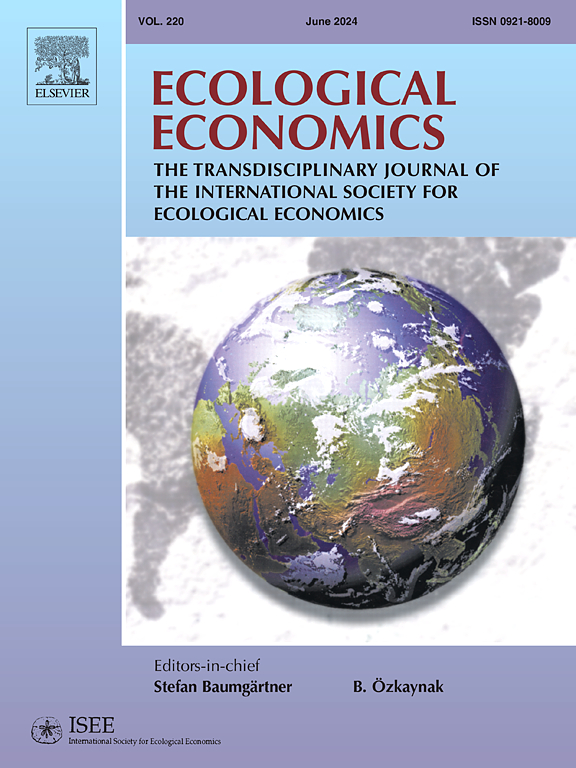Cost-efficient allocation of ship measures and harvest of aquatic invasive species – An application to invasive crabs on the west coast of Sweden
IF 6.6
2区 经济学
Q1 ECOLOGY
引用次数: 0
Abstract
The purpose of this study was to identify cost-efficient combinations of control measures (harvest of established invaders) and prevention measures (ballast water treatment and antifouling to prevent invaders) to achieve targets for the maximum population sizes of two invasive crabs, the Asian shore crab (Hemigrapsus sanguineus) and brush-clawed shore crab (Hemigrapsus takanoi), in interconnected water basins on the west coast of Sweden. To this end, a spatial bio-economic model was developed using transect methods to quantify population sizes and an ocean circulation high-resolution coastal model constructed to estimate connectivity between the water basins. The results showed that both harvest and vessel treatment measures offer cost-efficient solutions, but their optimal levels and timings depend on the choice of spatial target for acceptable population sizes. The costs can be high if increases in populations are to be avoided, but these costs are doubled when the target is to eradicate the populations. The results were also sensitive to parameter values in the population dynamics and cost functions, and to assumptions involved in policymakers' decisions about the targets to be achieved.
求助全文
约1分钟内获得全文
求助全文
来源期刊

Ecological Economics
环境科学-环境科学
CiteScore
12.00
自引率
5.70%
发文量
313
审稿时长
6 months
期刊介绍:
Ecological Economics is concerned with extending and integrating the understanding of the interfaces and interplay between "nature''s household" (ecosystems) and "humanity''s household" (the economy). Ecological economics is an interdisciplinary field defined by a set of concrete problems or challenges related to governing economic activity in a way that promotes human well-being, sustainability, and justice. The journal thus emphasizes critical work that draws on and integrates elements of ecological science, economics, and the analysis of values, behaviors, cultural practices, institutional structures, and societal dynamics. The journal is transdisciplinary in spirit and methodologically open, drawing on the insights offered by a variety of intellectual traditions, and appealing to a diverse readership.
Specific research areas covered include: valuation of natural resources, sustainable agriculture and development, ecologically integrated technology, integrated ecologic-economic modelling at scales from local to regional to global, implications of thermodynamics for economics and ecology, renewable resource management and conservation, critical assessments of the basic assumptions underlying current economic and ecological paradigms and the implications of alternative assumptions, economic and ecological consequences of genetically engineered organisms, and gene pool inventory and management, alternative principles for valuing natural wealth, integrating natural resources and environmental services into national income and wealth accounts, methods of implementing efficient environmental policies, case studies of economic-ecologic conflict or harmony, etc. New issues in this area are rapidly emerging and will find a ready forum in Ecological Economics.
 求助内容:
求助内容: 应助结果提醒方式:
应助结果提醒方式:


